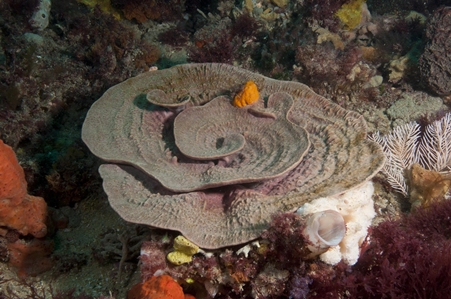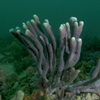General Description
A sandy-green to pink sponge species with plate-like form. Size of about 50 cm.
Biology
These sponges have a harsh or coarse texture, but remain flexible because of the presence of long thin fibres in the skeleton.
Habitat
Reef areas, to depth of 40 m.
Sponge gardens
Reefs
Distribution guide
Victoria.
Species Group
Depth
Water Column
Max Size
50 cm
Diet
Plankton or particles
Commercial Species
No
Global Dispersal
Recorded in Australia
Species Code
sp. MoV 6717
Identify
Conservation Status
- DSE Advisory List : Not listed
- EPBC Act 1999 : Not listed
- IUCN Red List : Not listed





